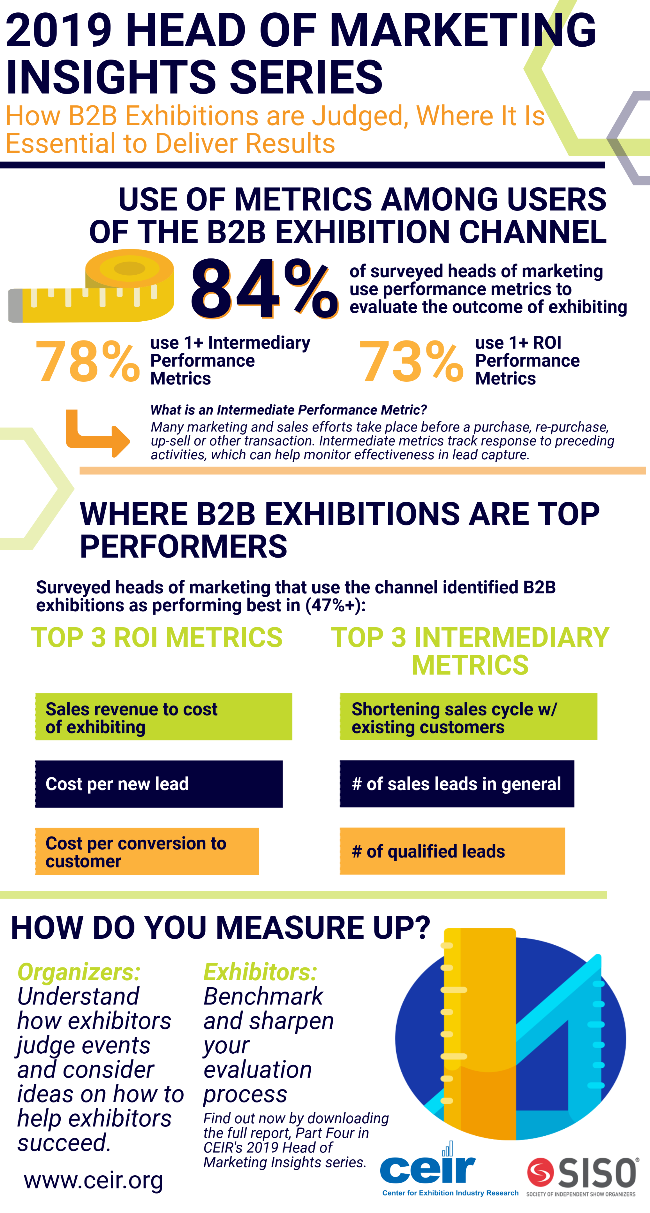New CEIR Reports Address Material Handling, Event Marketing Insights

Center for Exhibition Industry Research has released two new reports focused on the trade show industry’s latest best practices.
A must-read for first-time exhibitors looking to better understand material handling, Unraveling the Myths About Material Handling provides a comprehensive overview of what material handling is, along with details about what expenses and factors impact charges. It also shares advice on how to plan and send shipments cost-effectively.
Written by Aaron Bludworth, president and CEO of Fern (with contributions by Neil McMullin, senior vice president of Shared Services at Fern and Larry Arnaudet, executive director of ESCA), the six-page report includes the following:
· Definition of exhibition material handling
· Expenses incurred that are factored into an exhibition’s material handling charges
· Categories of how material handling is typically charged
· Sample calculation of how material shipment is typically computed
· Advice on how to manage material handling expenses
· Detail on material cost factors that offer explanations designed to help exhibitors think through the type of shipment they want to invest in, and pay attention to important details that can impact costs
“Education is essential to an exhibitor’s ability to minimize the cost of material handling,” said Cathy Breden, CEO of CEIR. “Knowing what goes into calculating this expense is key and organizers should educate exhibitors about options to help make the right choices and understand how to minimize costs.”
To download the full report, which is free for IAEE members, go here.
On the heels of this report, CEIR also released a new Head of Marketing Insights Series Report, “How B2B Exhibitions are Judged, Where It is Essential to Deliver Results,” the fourth report in its series that provides insights from marketing leadership at organizations throughout North America.

The study provides valuable data for show organizers and exhibitors looking to understand the most popular metrics exhibitors use to evaluate the performance of exhibiting, as well as where metric users find B2B exhibitions perform best.
“Goal setting and specific outcome metrics are key to enhancing the chances for success for any exhibitor,” said Breden. “The information in this report provides guidance to better assess how their event is most likely judged by exhibitors, and where to focus moving forward to enhance exhibitor outcomes.”
This report provides results relating to:
· Extent of use of performance metrics: overall, ROI metrics, intermediary performance metrics
· Specific metrics used
· For which metrics, users identify B2B exhibitions perform best
· Extent of use of metrics, whether limited to evaluating B2B exhibitions only or used more broadly across channels
· Ideas for organizers to consider to enhance chances for maximizing success against performance metrics
· Ideas for exhibitors on how to use benchmark statistics
In addition to total results, differences in results are reported by organization size, number of employees and heads of marketing by generation.
According to Nancy Drapeau, CEIR vice president of research, metrics offer useful guideposts for a number of decisions, including determining whether to exhibit at a new show or continue exhibiting at an event, and whether to change the level of investment in an exhibition based on metric results.
“Metrics also help prompt discussions on what support services or activities are merited to maximize specific exhibiting outcomes,” Drapeau said. “This report provides benchmark statistics exhibitors can use to compare to their practices and refine metrics to more tightly align with their end goals for exhibiting.”
To download the report, which is also free to IAEE members, go here.
Don’t miss any event-related news: Sign up for our weekly e-newsletter HERE and engage with us on Twitter, Facebook, LinkedIn and Instagram!


Add new comment